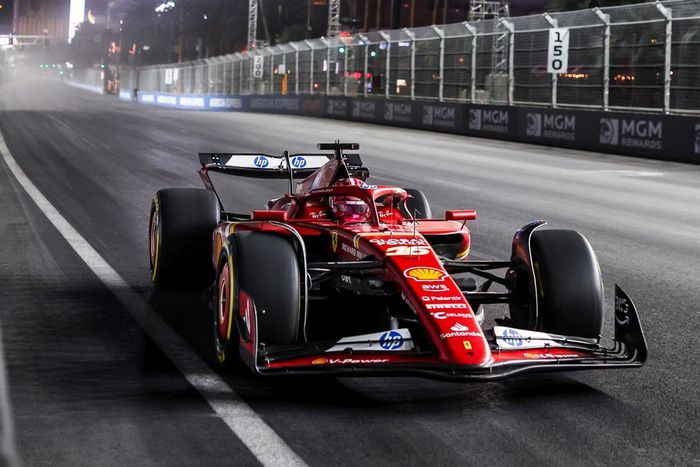Running this generation of Formula 1 cars as close to the ground as possible, without inducing bouncing or wearing out the floor plank, is something teams have been chasing since 2022 to maximise the downforce they can generate.
It is therefore no surprise that when the FIA added an ambiguous technical directive last year regarding what teams could do with the skid blocks to protect against floor plank wear, some teams tried to take advantage of a loophole they spotted.
What were teams doing?
As revealed on Wednesday, the latest technical directive issued by the FIA last week reversed some of the freedoms that were afforded by a previous directive in 2023. The FIA checks floor plank wear around four holes, one at the front, one aft and two side by side in the middle of the floor.
To help prevent those areas from wearing more than the 1mm tolerance, teams are allowed to install skid blocks around those areas. But then a 2023 technical directive, that was active until the most recent Brazilian Grand Prix, gave teams additional scope to prevent wear more aggressively.
Sergio Perez, Red Bull Racing RB20
Photo by: Glenn Dunbar / Motorsport Images
That did not concern anything done to the regular skid blocks around the measuring holes themselves, but the TD’s wording enabled the installation of additional protective skid blocks further away on the floor, so-called satellite skids, as long as they had the same vertical stiffness as the main skids.
It is not clear when teams first started adding these satellite skids. But with the TD that enabled it being issued during the 2023 season, teams will have been studying the rule change for some time, so it won’t have been a very recent phenomenon.
Who has had to make changes in Las Vegas?
On Wednesday, Red Bull and Ferrari first emerged as two teams that had to make modifications once this freedom was removed again by the latest TD. Intriguingly, it was Red Bull that actually raised the issue to the FIA after Brazil, which suggests that it felt Ferrari’s solution was much more aggressive and beneficial, and that Red Bull was therefore happy to make some compromises to reel back its championship rival.
On Thursday, Mercedes and Alpine both confirmed they also had to make changes to how they protect their floor planks, with RB’s racing director Alan Permane saying the team suspected Haas also used the loophole. The five remaining teams aren’t believed to have done so. That ironically includes McLaren, which has been fighting Red Bull on and off the track all year and now has been inadvertently helped by Red Bull’s actions in the papaya squad’s own title fight with Ferrari.
Lando Norris, McLaren MCL38
Photo by: Glenn Dunbar / Motorsport Images
Will those teams have to raise their floors?
It’s not a given that removing the additional skids means that teams automatically have to raise their floors, but it is a very likely consequence. After all, the point of these strategically placed satellite skids was to absorb bumps to spare the main skids, which protect the crucial measuring points. Removing them means there will be a greater risk of wear, and as seen by the disqualification of Charles Leclerc and Lewis Hamilton from last year’s US Grand Prix, it is not impossible for teams to get that equation wrong.
What will that cost them in performance, and where?
There does not appear to be a consensus over what it will cost teams to raise their floor by – say – one or two millimetres, with various paddock sources estimating the loss anywhere from 0.025s to 0.075s per millimetre depending on their designs. In Las Vegas, Ferrari played down the significance of the new TD, with senior performance engineer director Jock Clear saying “it’s not been a big drama to deal with”.
Some squads feel the impact of the new TD will be more acutely felt through the high-downforce swoops of Qatar’s Losail circuit, where having the optimal level of load and aero balance is all-important. But the current generation of cars is so sensitive that the teams involved could also feel an effect on the Las Vegas Strip, with the bumpy street circuit potentially forcing them to take bigger precautions to prevent excessive levels of wear.
To be clear, there is no suggestion that any team ever ran an illegal design. But Ferrari’s more extreme solution appears to be what triggered Red Bull to take action, with the FIA agreeing that recent interpretations went beyond what the rulemakers had intended.
The change will likely not change the world for any of the teams, but it will be intriguing to see if the clampdown actually hinders Ferrari’s fight in the constructors’ championship as third-placed Red Bull has been hoping.





































































